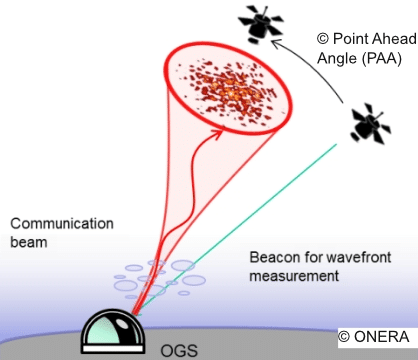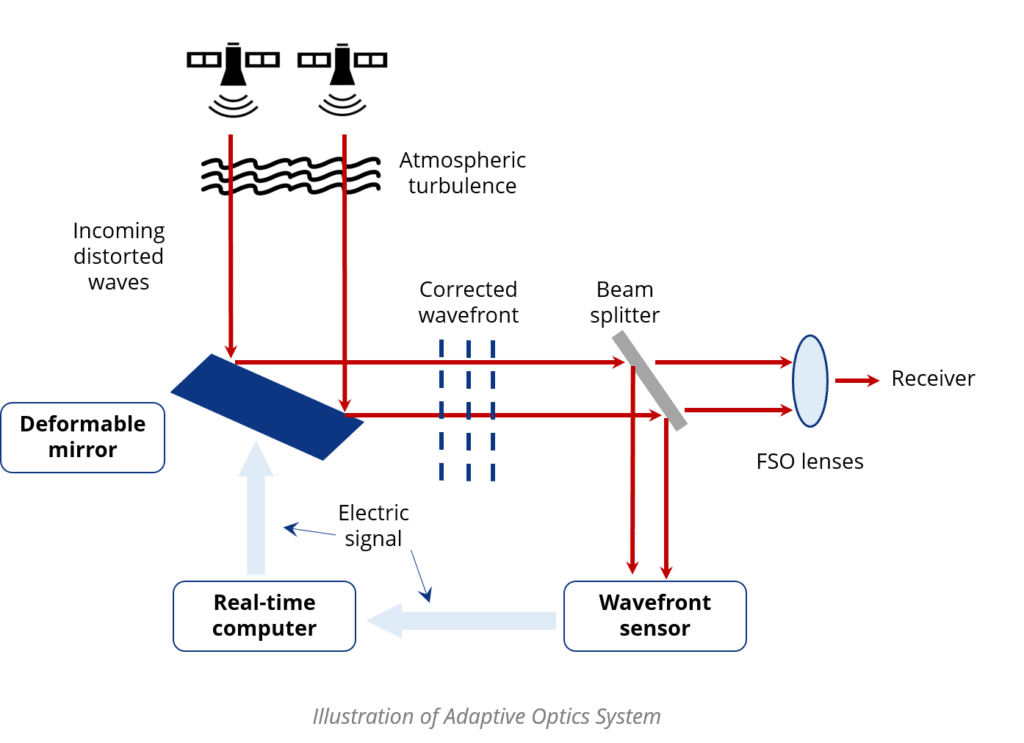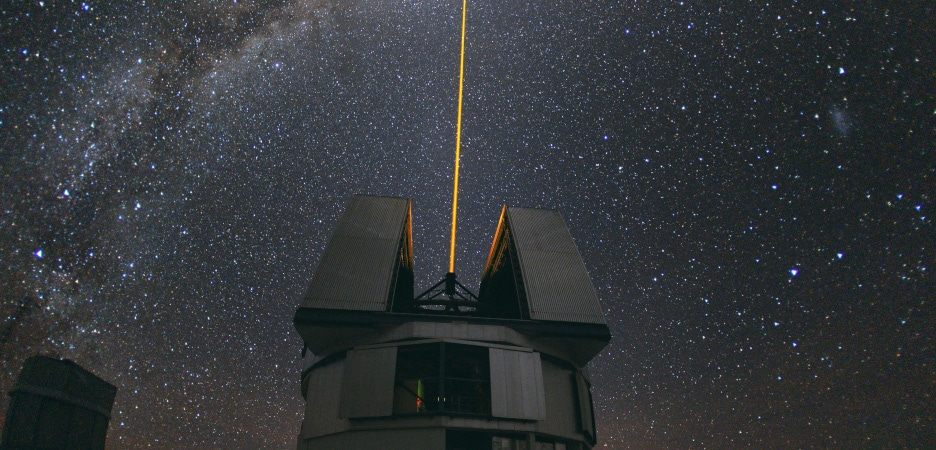Free Space Optical communications (FSO) is one of the next big things in the global telecom ecosystem. Optical fibers replaced copper cables, and optical beams and telescopes are now replacing radio dishes. Optical wavelengths can indeed provide larger data rate, do not require frequency authorizations and are inherently more secure.
FSO is already working in space but at some point, data have to reach earth and travel through the atmosphere. Unfortunately, the atmospheric turbulences dramatically attenuate the optical signal for both uplink and downlink.

Hopefully, this problem has been already solved by astronomers and engineers using adaptive optics (AO). AO for the downlink is a high-speed feedback system based on three main components:
- A wavefront sensor to measure the perturbation on the incoming optical beam,
- A real-time computer to analyze the signal,
- A deformable mirror to compensate for the wavefront perturbation and perfectly inject the optical signal into the receiving fiber.

AO for the uplink is made from similar components, but this time the optical beam is pre-compensated to optimize the power injection into the remote satellite receiving optics.
The world’s most advanced telescope, European Extremely Large Telescope (E-ELT) and semiconductor equipment (Zeiss Fortune™) are powered by ALPAO AO technology. This unique set of products and know-how is now ready for FSO:
- State-of the art high-speed and high sensitivity wavefront-sensors,
- A completely new hardware and software architecture optimizing the performance, robustness and maintainability of the AO real-time computer,
- A full range of deformable mirrors optimized for FSO wavelength, uplink power, speed and correction amplitude.
ALPAO has delivered more than 200 ready-to-use AO systems across the world. This know-how is now available to help you design, produce and maintain AO in any optical ground station for FSO.
More details:
- 🎬 Watch the replay of our webinar about “How to improve your FSO communications with AO”
- Read the dedicated page about FSO

